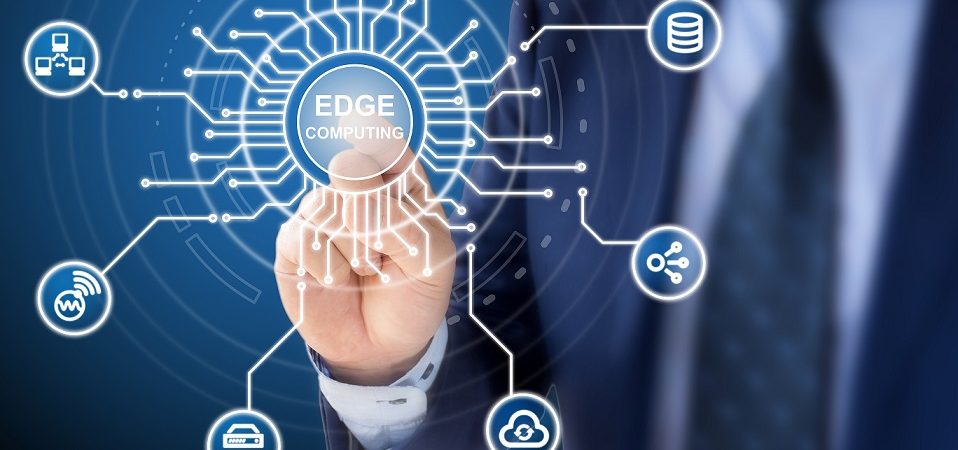Computing at the Edge of the network, known as Edge Computing, will revolutionize how we interact with technology because this form of computing will be as close to the action as possible.
Edge Computing will minimize latency – the time spent traversing a question and an answer across the network.
And to achieve this, it will encompass an entire ecosystem that includes 5G networks, fiber-optic-based infrastructure and the energy necessary to achieve it. However, it is the servers that are responsible for processing and managing the data instantaneously.
Preparing for Edge Computing
According to Gartner, by 2025, 75% of business data will generate and process at the Edge of the network, beyond traditional data centers. Thus, in little more than two years, computing as we know it will have radically changed.
And the market is ready. According to Grand View Research, the demand for Edge Computing may reach US$61,140 million in 2028, with a growth of 38.4%.
Latin America is one of the regions increasing its investment in Edge technologies. In 2020, Edge business spending was US$4.739 million according to Edge Spending Guide – IDC, July 2020, showing growth of 7.54% compared to 2019.
In addition, a compound annual growth rate (CAGR) of 16% is expected in the region for 2024, reaching US$8,573 million.
IDC also adds that five economic sectors represented 57% of spending on Edge Computing in 2020. They are manufacturing, banking, retail, telecommunications and insurance.
However, the demand generates new use cases, new business models and new industry players that will include everything from application developers and Edge solutions to new hardware, which will take advantage of innovative production scenarios.
To find out more, we ask the opinions of Christiano Lucena, VP of Storage, Platforms and Solutions Sales at Dell Technologies Latin America; Andres Campuzano, Compute Business Group Segment Sales Leader, Latin America at Hewlett Packard Enterprise; and Alejandro Pérez Quintero, Solution Sales Executive at Lenovo ISG (Infrastructure Solutions Group).
Christiano Lucena, VP of Storage, Platforms and Solutions Sales at Dell Technologies Latin America

In recent years, the trend that prevailed for decades which led to centralizing as much technology as possible was reversed. Incremental improvements in telecommunications promoted by the rise of 5G in society and the appearance of new sources of information came together with a hyper-connected world and the IoT.
These advances allow applications, services and ultimately, much of the world’s technology and computing to get closer to the point where things happen: The origin of data. This evolution takes us to the keyword that drives the competitive and voracious world we live in today: immediacy.
Now, organizations can extract value from information and make decisions in real-time, improving and digitizing their processes, creating new lines of business, or simply taking technology to where it could not go.
The opportunity is vast. Virtually any industry and any market will tackle projects within the framework of Edge Computing in one way or another. The concept of Edge Computing, whatever the breadth we want to give it, is not an isolated element but a fully integrated part within the technological ecosystem of an organization.
Edge Computing is an extension of the multi-cloud world that defines the technological map of each company. This is because Edge Computing is not just a place. Beyond where the information is generated, collected and processed, the subsequent transformation phase allows for extracting value from it.
How to implement it?
The new reality will imply a new model for different organizations that will face the complexity posed by new paradigms and architectures, also due to significant challenges in terms of security and the difficulty of giving consistency to all the elements of the chain.
It will be vital to seek simplicity with the consumption of end-to-end solutions and integrated and packaged platforms to make easier deployments and operations. It is necessary to guarantee all its integrity, security and availability elements. This activity is complex in a space with increasing computing points and information sources. Also it is challenging to maintain standards in infrastructure, processes and control plans.
The market is moving in this direction. One of the clearest exponents in Edge Computing is the telecommunications sector with the consolidation of the OpenRAN model.
In the meantime, organizations will need technology partners to travel this path with guarantees with a portfolio and a strategy capable of covering and simplifying the ecosystem. All industries are experiencing a Digital Transformation. The Edge plays a critical role in leveraging new data sources to drive specific and differentiated business outcomes.
Andres Campuzano, Compute Business Group Segment Sales Leader, Latin America at Hewlett Packard Enterprise

Here are starting elements every business should consider when implementing an Edge Computing strategy. First, Edge Computing cases vary widely in style and scope, ranging from a small data center located on an oil rig in the middle of the sea to a store with thousands of Bluetooth devices.
Then, organizations must choose the correct combination of technologies that best applies to their requirement. Edge Computing facilities can also be stationary or mobile. And, as the application needs to change, companies must have the ability to move workloads where they need them efficiently.
That does not mean complete autonomy to each remote site when moving processing, analytics and control to the Edge.
Although each location can operate autonomously, it is necessary to orchestrate all remote areas under a distributed asset set model that allows managing all distributed sites as one. The important thing is to move fast and stay flexible.
Connectivity is another critical point, given that today there is no such thing as ‘just’ hardware. I mean that today everything needs connection. At the Edge, everything starts from devices or sensors that have contact with the physical world, immediately, devices and sensors start their chain of connectivity back to the data center or the cloud. Things must work locally at the Edge even when the data chain or processing is not working.
In the same way, relevance needs to be given to the volume of data and transfer latency since we need decisions to be made in fractions of a second at the Edge.
The Edge captures and processes data without sharing it with the data center. Suppose we need to process large volumes of data to decide or act at the Edge without sending the data in an efficient and profitable way.
In that case, Pay-Per-Use-as-a-Service consumption models are maturing and becoming essential to Edge IT. Edge projects must scale rapidly from proof of concept to production, which requires financial flexibility.
To sum it up, as Edge strategies evolve, companies will face challenges. You can easily overcome the initial hurdles by taking advantage of new flexible technologies, new payment and management models.
By combining solutions and services from a global strategic partner along with an ‘As-a-Service’ model, the benefits of Edge Computing are now available to any business and doing so is now more feasible than ever, we must ensure that we have the right Edge platforms to support the requirement.
Alejandro Pérez Quintero, Solution Sales Executive at Lenovo ISG Latin América

Let’s start understanding what we are talking about when referring to Edge Computing. Edge Computing is the processing ability close to the source where the data is generated, used, processed and decisions are taken.
In other words, Edge technology becomes the bridge between the physical and the digital world. At Lenovo, we are committed to computing on the Edge and seek to simplify the operation of the IT department.
For this, we offer a portfolio of solutions with a hybrid, open, scalable and automated infrastructure to face business challenges by transforming the way to store and process data, and meeting each client’s specific needs with capacity, speed and the necessary security.
To understand how to implement Edge Computing, from Lenovo, we share the above recommendations based on situations that may arise and examples of how to solve them:
- You cannot always count on permanent and reliable connectivity. We have clients that use Edge servers on fishing boats, where connectivity is by radio or satellite, and external factors can affect it. In that case, this technology can do real-time analysis of fishing, estimates of usable protein and even analysis of the maintenance and fuel consumption of the boats since this type of analysis does not require a permanent connection.
- Sometimes the transmission capacity may be shortened. In a European city, we develop applications for the Edge and add 5G. One of the applications is associated with detecting traffic incidents and through video analytics and cameras at traffic light crossings, we can warn in real-time if there is an accident. Also, we can supply the video to the authorities allowing quick decision-making. Due to the number of cameras, it makes no sense to transmit the video to a centralized location or a public cloud. Instead, we process close to the cameras avoiding congestion in the city’s data network.
- Sometimes we need the response at the shortest time possible. If decisions are in industrial environments, the difference between milliseconds and seconds can be highly risky. In Canada, one of our clients processes recycled material, such as metals and on occasions, they stopped the operation because they found propane containers, which would cause severe accidents if they were not empty. Today, an Edge solution allows hazardous materials to be identified and separated in less time without the need to stop operations.
- Artificial Intelligence (AI) requires more power. Either train a computational model that identifies things, people or actions, or run that model in the real world. During the pandemic, some customers deployed models to verify the correct use of masks, security elements and social distancing.
These models are available in the market, for example, to identify if people are gathering while waiting to pay for a purchase, so the store can open a new line of service, improving customer satisfaction. This technology will expand computing to solutions and locations that we consider impossible or unfeasible.
Lenovo has a broad and growing portfolio of ThinkEdge devices and servers designed for the Edge, with a presence in more than 160 countries and an ecosystem of specialist Edge Computing Partners, with various use cases and ready-made solutions.


